
Every Driver Should Master These 8 Essential Skills
Excelling at the basics of driving will help you stay safe on the road.

Driving safely is a complex and often demanding task, even for an experienced driver. Before you get behind the wheel, make sure you are confident in these eight essential skills.
1. Safely make protected and unprotected left hand turns.
Left-hand turns are especially risky, because you’re attempting to drive across oncoming traffic. If your judgment is off or your visibility is compromised, making a left-hand turn that isn’t controlled by a traffic arrow may be dangerous.
When making a left turn:
- Yield the right of way to other traffic.
- Signal for the left-hand turn at least 150 feet in advance of the intersection.
- Make sure there are no other vehicles, bicycles, motorcycles, or pedestrians in your path. Be ready to yield to anyone in the crosswalk.
- Allow plenty of time to maneuver your vehicle from a stopped position across the traffic lanes.
- Begin turning when your vehicle’s front wheels are in line with the center of the street you are entering. If you are turning from a one-way street onto another one-way street, begin your left-hand turn when the curb begins to curve.
- If you want to turn left at a traffic light that does not have a left-turn arrow, consider continuing through and making three right turns to circle the block. Then, use the traffic light to go straight across.
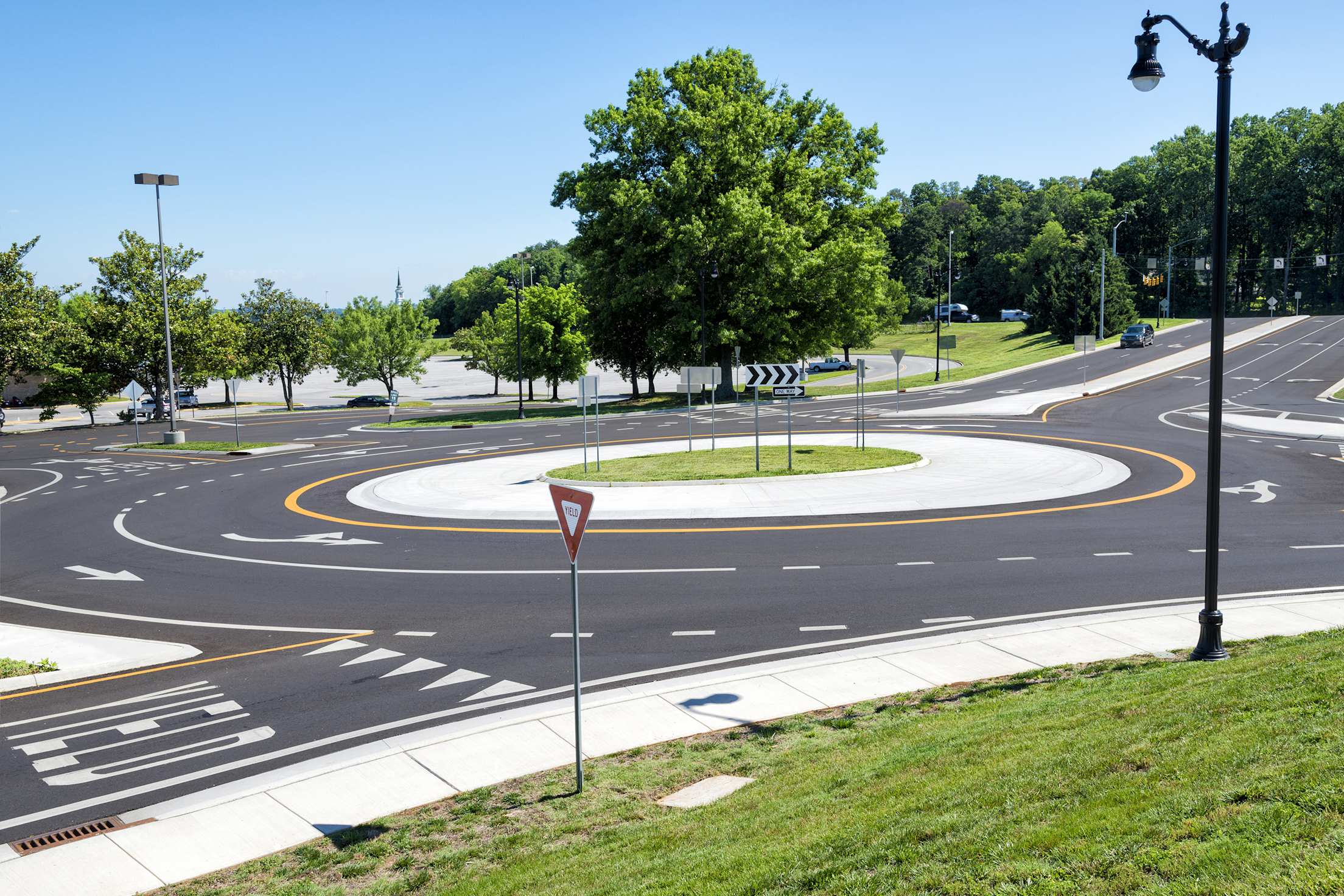
Learn who has the right of way when driving in a roundabout.
2. Enter and exit a roundabout.
A modern roundabout is small in comparison to traffic circles and rotaries. Roundabouts have a raised entry “splitter” island that slows down or constrains speed just before entry, duplicating the curvature the driver will experience within the roundabout itself. Vehicles in the circular roadway have right of way.
How to drive a roundabout:
- As you approach a roundabout, there will be a YIELD sign and often a dashed yield limit line. Slow down, watch for pedestrians and bicyclists, and be prepared to stop if necessary.
- When you enter a roundabout, yield to circulating traffic on the left, but do not stop if the way is clear.
- A conventional roundabout will have ONE-WAY signs in the center island that help guide traffic and indicate that you must drive to the right of the island.
- Left turns are completed by traveling around the central island of the roundabout and making a right exit.

Trucks should be given extra room when following or passing.
3. Properly follow and pass large trucks with plenty of space.
Drivers of large trucks have very limited visibility and large blind areas around them, which means they might not be able to see you. Because of this, driving around large trucks can be tough, and may be even more difficult in poor weather conditions.
When driving around large trucks:
- Avoid traveling alongside or close behind a truck. When a truck is backing up, do not pass behind it. The driver may not see you or hear your horn.
- Do not pass a truck on the right when approaching an intersection. A large truck making a right turn may need to swing wide so that the trailer can clear the curb or other objects in its path. In a wide swing, the truck may turn to the left a bit before turning right or swing into the oncoming traffic lane after a turn. It is important to give large trucks and semi-trailers ample room to negotiate turns.
- Leave additional space when passing. Because of their size, large trucks create wind currents that can affect nearby vehicles. These currents can threaten your vehicle’s stability when you are close. This is an even greater driving challenge when you are riding a motorcycle, towing a trailer or other object, or traveling on slick roads.
4. Take precautions when driving at night.
Reduced visibility is one of the biggest issues when driving at night. Your view is limited to the distance illuminated by your vehicle’s headlights, and you do not have the advantage of color and contrast that you have during the daytime.
Low Light
Being able to see well during the day does not necessarily mean that you will see well while driving at night. After driving four or five hours on a sunny day, it may take an hour or more for your eyes to adjust to low light at dusk or night. Some people may not adapt well to low light and should avoid driving at night. Driving at night also reduces your ability to see to the sides of your vehicle, which means extra care needs to be taken when turning or changing lanes. Regardless of how effective your headlights are, they do not adequately light off-road areas. Slow down when driving in areas with animal crossing warnings or rural areas where deer or other animals may dart into the road.
Glare and Recovery Time
While driving at night, all drivers are affected temporarily by the glare of headlights and brightly lit signs or buildings. Most people’s eyes recover from such glare within three to five seconds, but recovery times of seven seconds or longer are not uncommon. When driving at 55 MPH, you can travel nearly the length of a football field before you can fully see again. Typically, the time to recover from glare while driving at night increases with age, and people with cataracts will find their ability when driving at night is severely impaired.
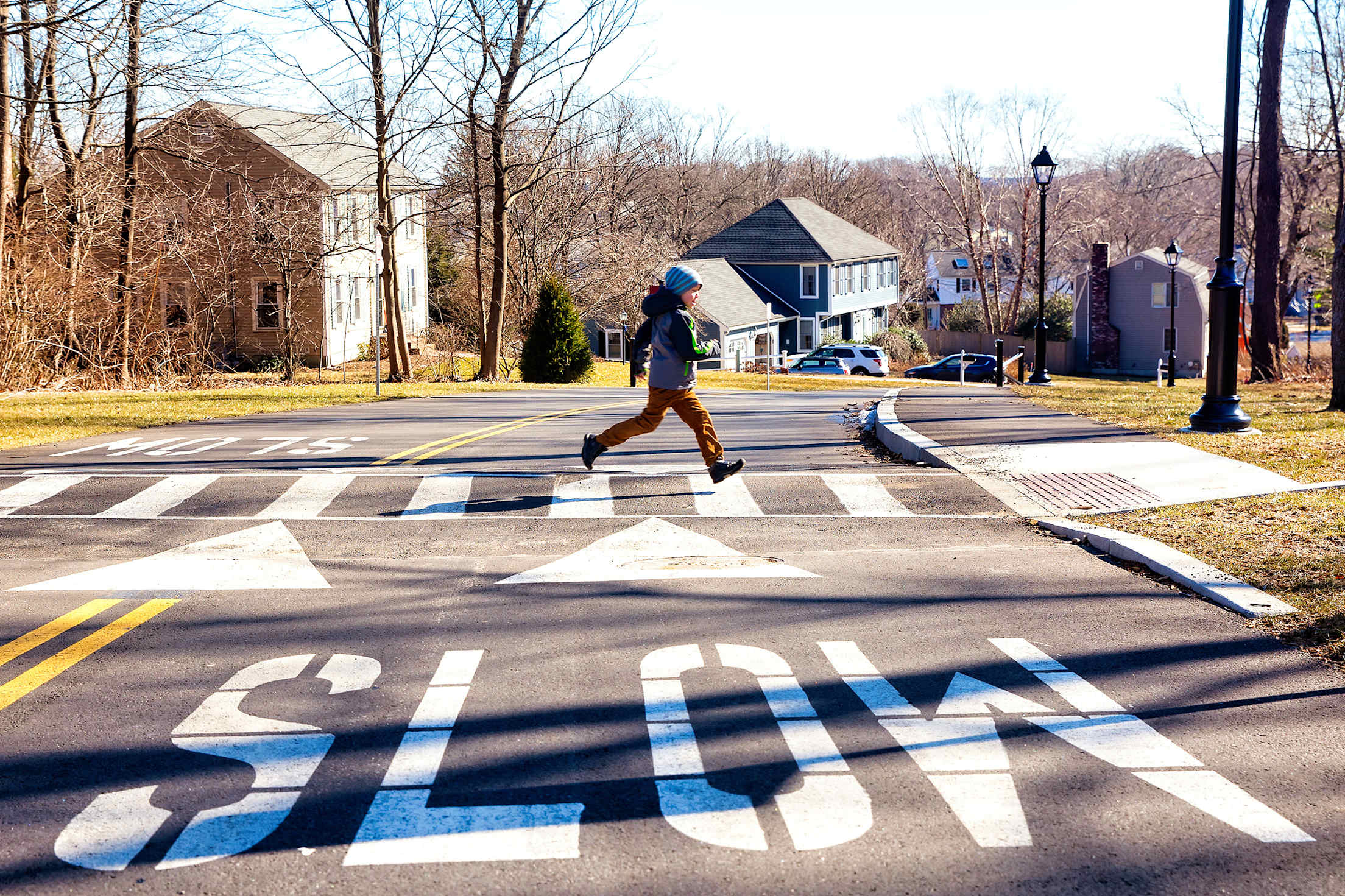
Pedestrians have the right of way, even when the intersection does not have a marked crosswalk.
5. Yield the right of way.
A Federal Highway Administration study of 40,000 drivers at intersections controlled by stop signs revealed that two-thirds of drivers failed to stop. So instead of assuming that other drivers will automatically yield right of way, you should pay careful attention to their intentions and actions.
Since they frequently require personal judgment, right-of-way laws are sometimes difficult to understand or apply. The following principles can help:
- The right of way is always given; it is not something a highway user should take for granted.
- The purpose of right-of-way laws is to prevent conflicts resulting from one driver failing to yield and give right of way to another.
- A driver has not yielded right of way if they force other highway users to slow or wait.
- When two or more drivers approach a situation where someone is supposed to yield right of way, all drivers should be prepared to yield.
- All drivers are required to exercise due care to avoid a collision, and whoever has the last clear chance to avoid a collision has an obligation to do so.
6. Smoothly back up.
Have you ever had trouble backing a vehicle out of a parking spot in a busy shopping center? Here are some safety tips to make the process easier:
- Before entering the vehicle, check to make sure the path to the rear and sides is clear. Children and objects are often difficult to see from the driver’s seat.
- Keep your foot firmly on the brake pedal while shifting to reverse.
- Maintain control by backing the vehicle slowly and being prepared to stop quickly. Your vehicle is much harder to control and stop when backing.
- Check traffic conditions in all directions and check all blind areas carefully.
- Look in the direction you are moving, but never concentrate on any one thing to such a degree that you neglect your surroundings.
- Since you cannot see objects close to the rear or sides when looking out the window, use front and rear windows and inside and outside mirrors when reversing a vehicle. Also, check to the front to determine whether the front of the vehicle is tracking in the direction you want it to go.
- When backing, the rear of the vehicle turns in the direction you turn the steering wheel. If you become confused or disoriented while backing, stop and begin again.
7. Parallel park and stay inside parking space lines.
Although many drivers find it challenging to park in marked parking spaces, it is not difficult once you are able to judge the space available and have a good understanding and control of steering and speed.
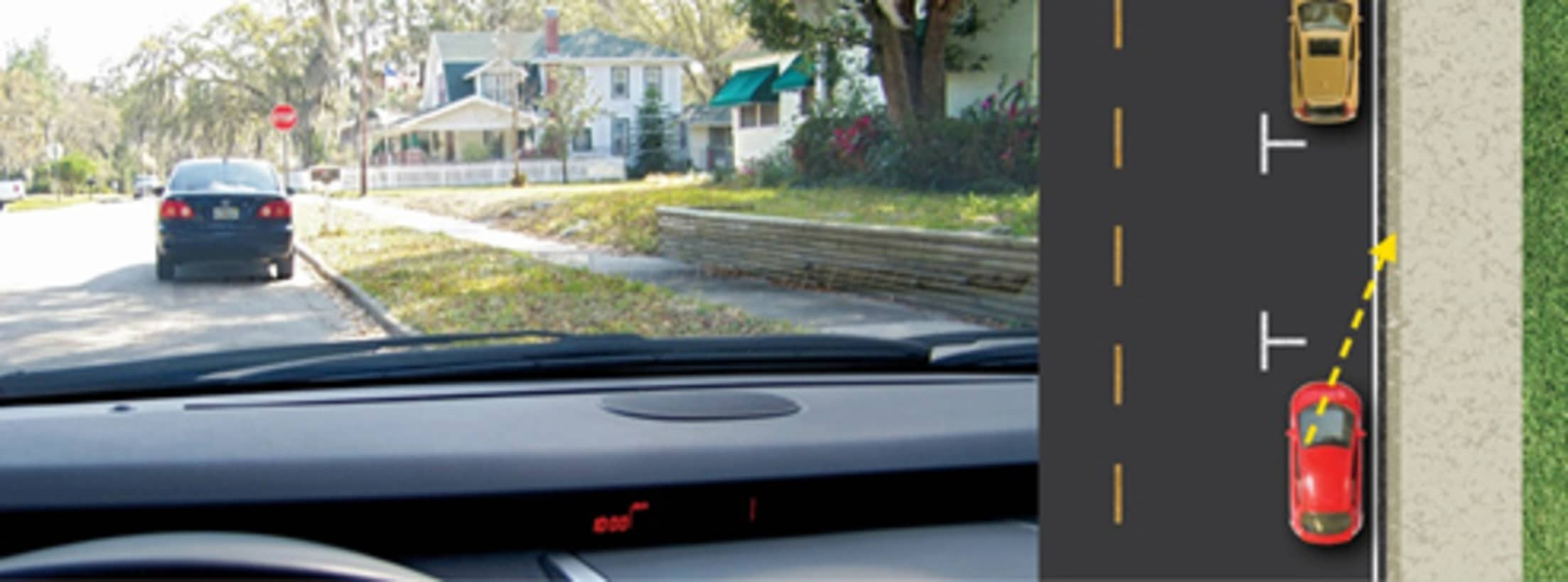
Curb Parking
To park a vehicle the correct distance from a curb on the right, project a sight line over your hood, right down the middle. When you match that point of your hood with the road edge, your vehicle will be approximately six inches from the curb on the right.
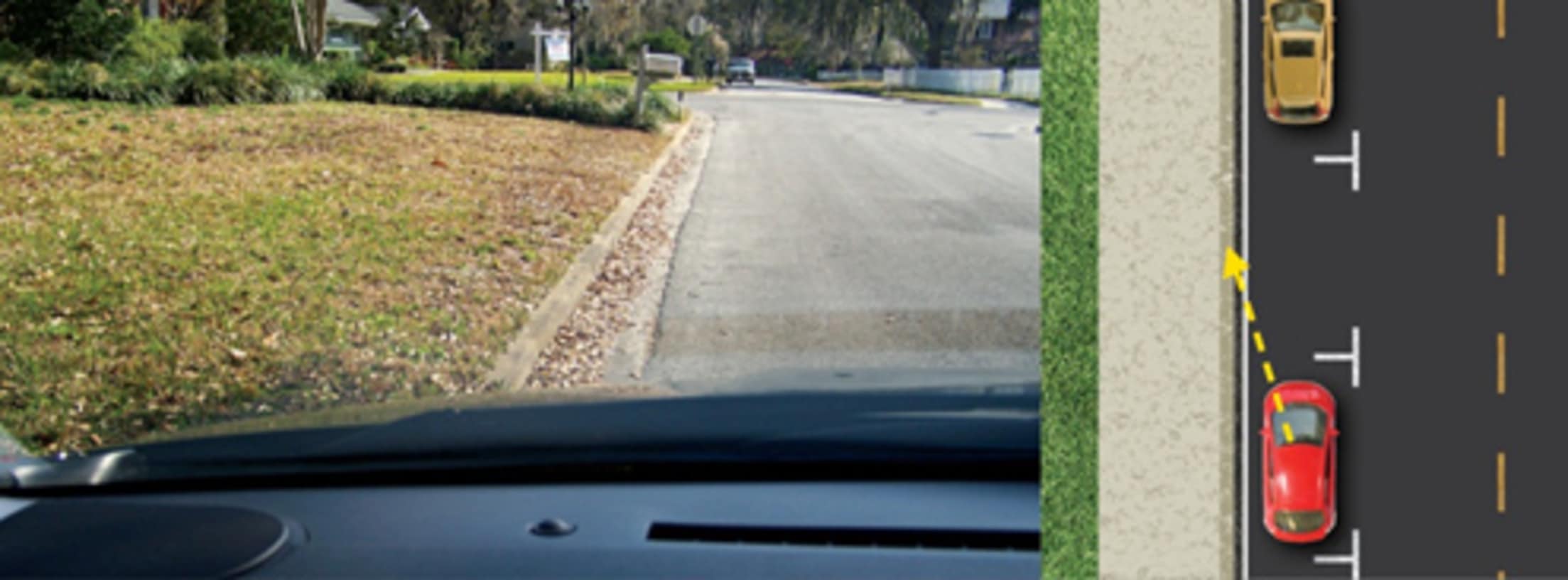
To park a vehicle the correct distance from a curb on the left, project a sight line over your hood, extending over the left front corner of the vehicle. When you match that point of your hood with the road edge, your vehicle is approximately six inches from the curb on the left.
Perpendicular Parking
To help determine how far forward to pull into a perpendicular parking space, use a reference point. Know where the front of your vehicle is by projecting a sight line just under the driver or passenger side-view mirror ahead to the ground. The front of your vehicle will be at that point.
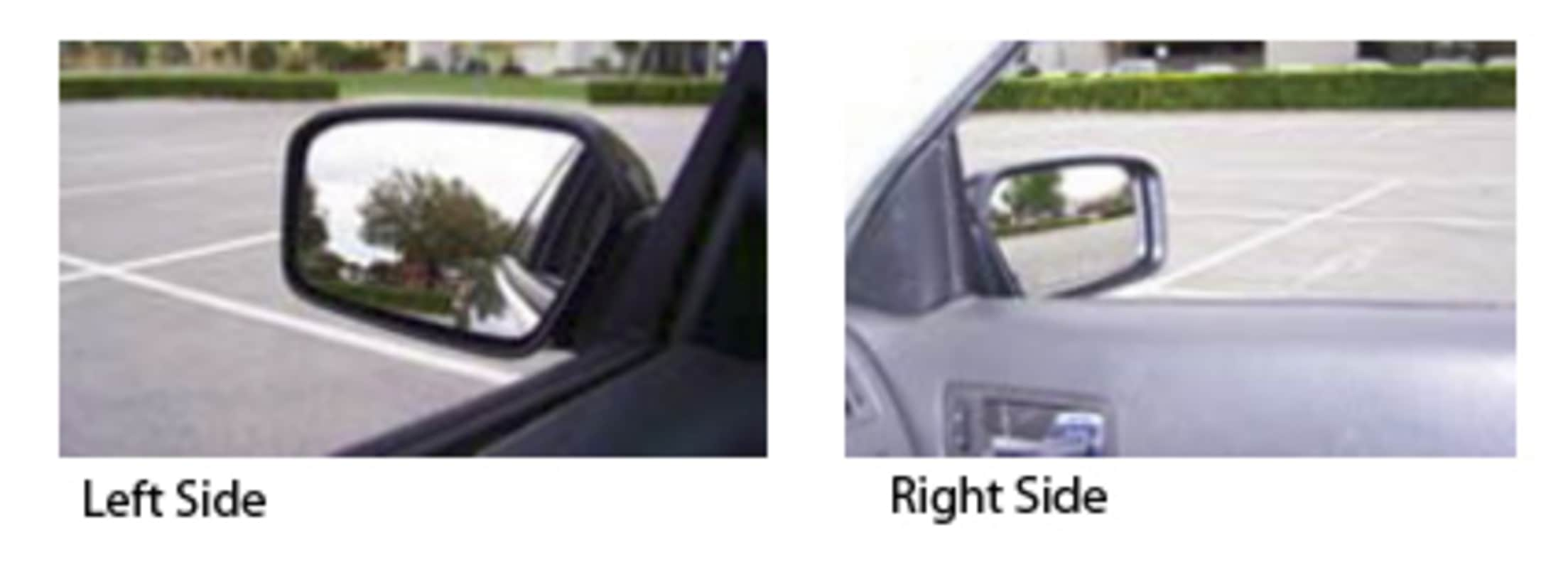
Always leave enough room between your vehicle and any vehicle parked directly in front of you. This technique can also be useful when approaching intersections where you must stop.
Parallel Parking
Think of parallel parking as nothing more than a lane change in reverse. As you manage your steering and speed, be aware of two areas of your vehicle to aid in using reference points: the center of your vehicle and the rear edge of your vehicle. You will also need to confirm that your intended parallel parking space is at least one and a half times as long as your vehicle.
8. Calmly handle aggressive drivers.
It’s never pleasant when someone cuts you off on the highway or tailgates your vehicle. When confronted with an aggressive driver, take charge of your actions so a bad situation doesn’t get worse.
- Aggressive driving: This occurs when a driver exceeds the speed limit, follows too closely, fails to obey traffic controls, or makes improper turns and maneuvers, among other aggressive driving behaviors.
- Road rage: Road rage occurs when an aggressive driver uses a vehicle or some other weapon to threaten or cause harm to another roadway user in response to a traffic incident. Road rage is an escalation of emotions generally ignited by aggressive driving behaviors.
How to Prevent Aggressive Driving and Road Rage
One key to prevention is to avoid engaging in the behaviors yourself and to try not to give other roadway users cause to become aggressive. In general, you should:
- Avoid conflict. It is best to assume that other drivers’ mistakes are not personal.
- Never attempt to take the right of way. It must be given to you by other drivers.
- Return to low-beam headlights—if you're using high beams—as soon as you detect an oncoming vehicle.
- Avoid driving behind another vehicle with your high-beam headlights on.
- Be as polite on the road as you would be in any other social situation. You cannot control traffic, but you can control your responses to it.
How to Respond to Aggressive Driving and Road Rage
Unfortunately, other drivers can become aggressive or enraged. If you are confronted by a driver displaying aggressive driving behaviors toward you, follow these guidelines.
- Do not respond to the other driver. Avoid any escalation of conflict.
- Avoid eye contact with the aggressive driver or occupants.
- Be tolerant and forgiving. The aggressive driver may be having a really bad day and be looking for a way to vent anger.
- Be sure to allow enough room around your vehicle so that you can pull out or around if someone approaches your vehicle.
- Do not get out of your vehicle—it offers protection.
If necessary, contact 911 for assistance and drive to a busy public place where there are witnesses, such as a hospital or fire station. Once there, use your horn to attract others’ attention, if needed.